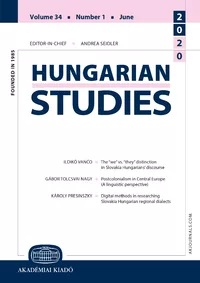“The inventory of possible realities” – Structures seen from above: Contemporary Hungarian literature and the epimodern theory of Emmanuel Bouju
“The inventory of possible realities” – Structures seen from above: Contemporary Hungarian literature and the epimodern theory of Emmanuel Bouju
Author(s): Csaba HorváthSubject(s): Hungarian Literature
Published by: Akadémiai Kiadó
Keywords: contemporary Hungarian literature; post-postmodern; epimodern; Emmanuel Bouju; Tranquility by Attila Bartis; The White King by György Dragomán; Pixel by Krisztina Tóth
Summary/Abstract: After the fall of Communism a new generation started its career in Hungarian literature. They invented a new literary concept based on the experience that modernity had liquidated the language and postmodernity dispersed meaning. The most important feature of this concept was that realistic and postmodern expectations should not be confronted as opposites. This perspective appears in many books and many articles by Emmanuel Bouju, offering a possibility to link the three consecutive steps of a continuity through six epimodern values that can be perceived as a bridge overarching the different periods of art and literature. Several authors and works of contemporary Hungarian literature show strong parallels with the international literary process. Tranquility by Attila Bartis, The White King by György Dragomán and Pixel by Krisztina Tóth can be linked to Bouju's theory. In my approach the aforementioned novels use different branches of art as a sort of prism in order to understand the “preposterous aspects of the present and the past” (Boym). As Emmanuel Bouju's essay enables us to define the trinity of Modernism, Post-modernism and contemporary After-Postmodernism as a whole in which ruptures may be considered as three steps of the same continuity, the Hungarian books examined here are works that have re-claimed the validity of the coherence of the story whilst, as a heritage of the postmodern, they have also preserved skepticism regarding master narratives.
- Issue Year: 36/2022
- Issue No: 1-2
- Page Range: 113-125
- Page Count: 12
- Language: English

